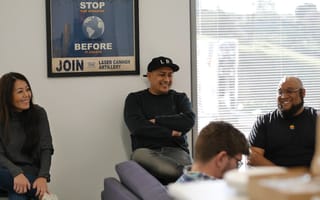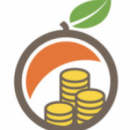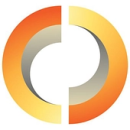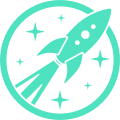
Ask anyone if they are familiar with the adage “there is strength in numbers,” and there’s a likely chance they will say yes. But what makes it true?
Effective teamwork takes more than just a large group of people thrown together and told that a task must be accomplished. It also requires a shared set of beliefs, a strong sense of collaboration and unique perspectives to approach problems from multiple angles.
“While a lot of companies have flashy values that are advertised on their website and maybe glanced at once a year, we center everything around our eight values,” Ramzi Nasr, senior director of engineering at VideoAmp, said. “Every individual takes it upon themselves to make sure they are not a bottleneck and everyone helps each other to deliver what we promise on time.”
Approaching challenging projects with a like-minded engineering culture makes them informative, successful, and according to Versus Systems Software Engineer Helen Medrano, fun.
Built In LA caught up with nine engineering professionals to discuss what tech stacks help smash their most challenging projects and why their currently-hiring organizations stand out from the rest.
As FIGS Senior Director of Engineering Arjan Singh said, “There really isn’t a better time to join the team.”
Born out of Cornell University and currently headquartered in Los Angeles, ProducePay provides payment solutions in the world of produce, applying fintech innovation and marketplace transparency to farming fresh food.
Produce Pay’s tech stack: “We use Ruby on Rails on the back end with a PostgreSQL database, a GraphQL API, and React on the front end,” Chin said. “We also use Elasticsearch (with custom grouping and filtering) to query big volumes of data. Our other team uses Elixir/Phoenix on the back end and React with Typescript on the front end. We also have a mobile app that is built with React Native.”
“One of my favorite tools is Cypress.io, which we use to set up our E2E tests. It’s a great testing framework that reduces flaky tests and makes it easy to set up programmatic interactions – it makes writing tests much more enjoyable.”
Perfecting the match: “One of our most challenging projects is a product we call “Preferred Network” – essentially a digital marketplace for wholesale fresh produce. We connect buyers and sellers who are looking to trade in particular commodities. There are multiple facets to how technology can drive the success of this product, from finding the perfect match between buyers and sellers, to automating the qualification process as well as empowering our internal teams to make sure the deal goes through.”
“I enjoy exploring the various channels that allow us to accelerate the matchmaking process; it’s a fast-paced iterative process that allows us to try new things and focus on building the right features to improve the trading experience. In just the last few weeks, we’ve explored email digests, SMS messages and listing blocks within our app. Next up is to experiment with WhatsApp messaging and creating a system that better facilitates communication between the two sides of the exchange.”
Strengthening team bonds: “We are a very product-focused engineering team. Each engineering squad has a product manager, designer and engineering manager forming a core part of the team. This creates a tight collaboration between product, design and engineering. Engineers are heavily involved in the product and customer discovery process, and we all have the opportunity to contribute ideas and solutions that we think can help to push the needle forward.”
Aspiration is a fintech company that offers socially conscious and sustainable banking, investment and retirement products that help people improve their financial situations while making a positive impact on the world.
Aspiration’s tech stack: “Our back end includes legacy services in Java, Python, and Ruby, but all our most active projects are in Go, using the Twirp framework for API servers,” Lloyd said. “We use PostgreSQL for our databases, and a few services also use Redis or Elasticsearch for more specialized purposes. As an engineer working in this stack, Go is the most delightful part of it. As is well known, its handling of concurrency is very elegant. But that elegance – driven by simplicity – pervades the language as a whole. It lacks many features that other languages have (for example, there are no while loops in Go, since the same behavior can be achieved with a for loop), which is occasionally frustrating. But on the whole, it helps write well-crafted code in a consistent and readable style. Rarely do I have to decide which of a variety of packages is best for my use case, because the core Go libraries almost always handle everything I need.”
Embracing new possibilities: “Recently, my team set up a new service to centralize and standardize the events that drive various asynchronous processes in our back end. We use AWS SNS and SQS to send our events, and previously the scope of topics was usually defined very narrowly, such that almost every event had its own topic. With our events service, we established a single topic, and routed messages to various queues based on a type and subtype attribute. The service also logs all the events fired through it to a database, so we have a record of every event that an async process might take action on (or we will, once everything is migrated over to firing events this way).”
Determined to make an impact: “Aspiration is the place where, if you’re driven to improve things and willing to take initiative, you can make a very meaningful impact. This is not to say that people are allowed to make changes unilaterally, but if you want to establish a new best practice, you’re welcome to demonstrate it, bring it to your team, and make the case for it. This happens frequently on my team. I’ve introduced new testing patterns, new libraries, and new style-checking tools this way.”
EZ Texting equips businesses with SMS marketing capabilities, letting them leverage texting to power efforts like sales, promotions and lead generation. Industries supported include real estate, retail and automotive.
EZ Texting’s tech stack: “Our tech stack is built with Spring Boot on the back end and Angular on the front end,” Szela said. “We have a microservices ecosystem with more than 20 services and growing. We’ve built them leveraging technologies like Boot MVC, WebFlux, Spring Cloud Netflix, OpenFeign, GCP serverless functions, Hadoop, Spark, Elasticsearch, and many other tools. It’s a rich platform constantly being updated and modernized. Currently, we are working towards adding BigQuery to our stack, and considering adding Kotlin.”
Collaborating for increased engagement: “We’ve been highly focused on personalizing the experience of our customers and their audience. Through collaboration across multiple engineering teams and three continents, we’ve provided our customers with new capabilities, like using a custom phone number in their area code or access to a vast gallery of Shutterstock images with a comprehensive image editor. We’ve seen a significant uplift in audience engagement, which is one of our key metrics. When I think that higher engagement leads to growing businesses and solving tough problems, it makes me proud to be a member of the EZ Texting team.”
A focus on autonomy: “Our teams are organized in the so-called “Spotify model.” Each team owns a specific part of the product and the system, is given a wide range of autonomy, and drives their own goals. Working in such a way requires a high level of collaboration, diversity of thought and mutual support. To spice things up, we constantly improve the way we work by following Agile principles. If something doesn’t work the way we like, we try a different approach, evaluate, tweak, and arrive at a solution unique for a squad or the entire team.”
Core Digital Media is out to empower people financially. The online marketing and consumer acquisition platform runs sites like LowerMyBills.com and ClassesUSA.com, which help consumers make optimal choices when it comes to loans, insurance and continuing education.
Core Digital Media’s tech stack: Java, Node, React, Spring Boot, Postgres, AWS, Microservices architecture and more.
“The most recent favorite tool that my team is using is Datadog for observability and AWS Code Build/Code Pipeline for CICD,” Patel said.
Attempting every tool: “The most recent interesting project we worked on was observability. We were looking for tools to improve the overall observability of our systems. We wanted to have a single pane of view for our application metrics, infrastructure metrics, traces, real user monitoring and alerts. We did POCs with various tools out there in the market and settled down on Datadog as our observability tool. We enjoyed the journey of researching, discovering what is out there and suits our needs, and then finally settling down on one tool that we all agreed worked for us.”
An emphasis on individuality: “The most unique thing about my team is the team members themselves. I love seeing the passion they have for the work they do, the innovative solutions they come up with for issues we face and the energy they bring to work every single day!”
Fashion-forward medical apparel company FIGS is helping healthcare professionals change the way they shop and dress. The company designs a lineup of fashionable scrubs in vibrant colors and styles so medical workers can look and feel confident on the job.
FIGS’ tech stack: “FIGS is scaling rapidly as a company and team, and we’re creating – and constantly evolving – our technology to support that growth,” Singh said. “We’re deliberate and strategic in our approach, leveraging modern, well-tested applications, middleware and third-party services to ensure that our philosophy and work as an engineering team are top of class.”
“More specifically, for our front end, we could not live without React and Typescript and the rich applications they let us build. Our back end runs on Node.js and Ruby on Rails. All of our infrastructure is on AWS.”
Building from the ground up: “We just finished a nine-month process to completely rebuild our front end as a server-side rendered Next.js application. 2021 is about helping the company scale. We’re in the process of building a new product catalog service. It is going to intake data about our clothing and other items from our various internal systems and integrate that all into a holistic system to manage our product information. We’re also redoing our homegrown embroidery management system. FIGS is one of the largest embroidery operations in the country and our software engineering plays a critical role in supporting the productivity and scalability of this operation.”
Empowerment in small numbers: “Firstly, everyone at FIGS, including our engineering team, is driven by our company mission: to celebrate, empower and serve those who serve others – and it shows. There is something really unique and powerful about working with purpose. Secondly, this team owns our work in a way that I have not experienced at other companies. At the same time, we aren’t siloed.
“When I describe the various projects our team is working on to former co-workers, they assume I lead a team of 25 or 30 people. When I tell them we’re a small but mighty team of nine engineers, they don’t believe me. We definitely punch above and beyond our weight class. There really isn’t a better time to join the team.”
MotorTrend Group is the world’s largest automotive media company. Boasting a monthly audience of 26 million across web, TV and print, the company operates an automotive digital platform that includes products, websites, apps and live events.
MotorTrend Group’s tech stack: “MotorTrend is redefining itself as a tech company first,” Kwong said. “With our history in the automotive industry and strong media presence, we have a solid foundation of content and want to be forward-thinking in how our technology enables that delivery in a cohesive and engaging manner. We have modern dev stacks and cloud-centric infrastructure to build experiences for the web, devices, and connected TV platforms (Roku, ChromeCast, AppleTV, etc.) using React, Node.js, TypeScript, BrightScript, Kotlin, Swift, AWS, and more. In addition, MotorTrend is aligned closely in a joint venture with The Discovery Channel, allowing us stronger synergies and targets to build and develop in-house solutions for content management, identity, search, data insights, and scalable patterns.”
Consolidating is key: “One of the biggest projects is the consolidation of many of our web properties and technical stacks. Over the years, there have been various acquisitions (HotRod, Lowrider, Automotive Magazine, etc.) and growth at MotorTrend, leaving a fragmented ecosystem and technologies across these properties. Our target focus now is how to align all these into one platform.”
“Although consolidation and operational excellence isn’t always the sexiest, it’s super exciting for me to spearhead and build out foundational engineering elements to enable the ability to deliver faster, more robust solutions.”
A growth-generated environment: “I’ve only been here a few months and I love the ability to own and drive significant changes throughout the organization. It’s a startup-like environment where anyone can contribute to big changes enabling faster delivery of quality products. In the organization, you have the ability to work on different products in the ecosystem and anywhere on the stack to grow, learn and build your technical acumen to deliver a product directly reaching our customers’ hands.”
Founded in 2014, VideoAmp strives to simplify the cross-screen world in online advertising. The AdTech company’s technology allows clients to transact across all devices, from TV to digital, with its screen optimization platform.
VideoAmp’s tech stack: “On our team, we use an end-to-end tech stack to build high-quality software systems and deliver value to our clients,” Nasr said. “The tech stack includes React, Node.js, Typescript, and Python on the front end/API side, and Snowflake, Postgres, Jupyter, Kubernetes, Docker, and, Airflow on the back end. We also use Postman, Cypress, and Percy to test our software development and Jira to track our agile project management.”
Identifying conversion data: “Our team has taken on solving the problem of multi-touch attribution. Multi-touch attribution closes the loop on measuring marketing effectiveness of advertising campaigns by bringing in conversion data – which could be an online or offline purchase, a tune-in to a premier show, or any action taken by end users that are valuable to the advertiser or business – and combining these conversions with our measurement sources. Multi-touch attribution empowers the advertiser with the all-important explanation of how different touchpoints in a campaign lead to conversions and which touchpoints get credit more than others.”
Believing in the mission: “One of the coolest things about VideoAmp is how all teams really uphold our company values. While a lot of companies have flashy values that are advertised on their website and maybe glanced at once a year, at VideoAmp we center everything around our eight values. Our day-to-day operations, our roadmap planning, our performance evaluations, you name it, are all measured against our values.”
“Three of them really stand out to me: ship it fast, figure it out and embrace wellness. As a team, we take on the challenge of balancing fast turn-around times without compromising quality. Every individual takes it upon themselves to make sure they are not a bottleneck and everyone helps each other to deliver what we promise on time. But we do it all with a focus on flexibility to also embrace wellness and not sacrifice our physical, mental or spiritual health.”
Flowspace’s on-demand warehousing and online retail fulfillment solution help merchants deliver shipping fast. Its network consists of more than 1,000 warehouses that are connected by Flowspace’s logistics platform to support businesses of all sizes and manage inventory.
Flowspace’s tech stack: “Our main application is based on Ruby on Rails, with our front end interfaces written in React,” Harbert said. ”Some of the services we use have been abstracted out into other languages as needed given load and throughout. We collaborate using Git, Notion, Zoom, and Slack. We’re currently migrating our infrastructure over to GCP to take advantage of some of their big data and data science tools.”
Mapping the route to success: “There are two really interesting domains that we work in: the operational side that makes Flowspace function and keeps orders shipping, and the data science side. These are not distinct and often overlap. Operationally, Flowspace manages receiving inventory into, and pick, pack, and shipping orders from hundreds of warehouses around the country that we do not own or operate. This is where data science comes in, because knowing how to distribute inventory, how to best route and batch orders together, and how to maintain quality across the network requires us to utilize all of the unique data we have. Because our platform covers all areas from the shopping cart to the carrier, we have a ton of very granular data to analyze.”
Strength in diverse backgrounds: “I’ve never worked with a stronger and more diverse engineering team. Everyone has come from different backgrounds, from consumer-facing apps to logistics. It makes our approach to solving problems unique and interesting. The team is also obsessed with improving: we host weekly lunch and learns, provide mentorship, and seek to hire others with unique qualities that improve our overall team. We move fast and are encouraged every time we stop to reflect how far we’ve come and how much more there is to do.”
Versus Systems is an in-app advertising tool that aspires to make the relationship between brands and consumers more fun. The white-label platform allows retailers to embed real-life prizes into popular games, creating a more engaging and rewarding experience for all.
Versus Systems’ tech stack: “Our tech stack includes Elixir, GraphQL, ReactJs, C#, Swift, and Kotlin,” Medrano said. “I started on the Elixir back end and have slowly moved to other parts of the tech stack. A good portion of the engineering team is also multi-talented in this way. My favorite language so far is Swift. I love functional programming and I think Swift incorporates it very well, even though it is not a purely functional language. It’s also type-safe, which makes me feel better about the quality of code I am writing.”
Swift and steady wins the race: “The most recent project I’ve started on is creating a new Swift iOS project from scratch. I’ve never built something from the ground up, so I’m learning a lot. I love seeing it slowly come together from nothing. I also don’t have the best eye for design, so it’s been a fun struggle for me to make a nice user interface. Swift makes it easy to build, at least. The lead iOS developer is also an incredible mentor with a ton of knowledge to share.”
Culture shock: “I can’t stress enough how much I love the culture here at Versus. It’s fun, collaborative and supportive. I’ve been able to jump between different tech stacks and projects. In my one year here, I’ve been able to do Elixir, ReactJs, C#, Unity and iOS. If I’m interested in something, the opportunity has been presented to me. I appreciate that kind of flexibility and support from management, as well as the rest of the team. If I am ever stuck on something, there’s no hesitation from my peers to extend help. I feel really heard here as far as what I like and what I want to work on. I think that’s rare to find.”






















